From Lyon to Paris: 12 Days Total Immersion in Burgundy and Champagne
Sunday, July 02 - Thursday, July 13, 2023
Annette Schiller - Announcement: Our way of traveling allows wine lovers to fully experience the greater Burgundy area and to get a good idea about Champagne making. What comes to your mind, when you hear ‘Burgundy’? First class Chardonnay and Pinot Noir; ancient history; world-renowned vineyards; Cistercian monks; 1000 year old abbeys; quaint small wine villages; the Hospice de Beaune; good cuisine. All this applies and we will explore in detail these different aspects during our tour through Burgundy and the Champagne region.
We start in vibrant, cool, sophisticated Lyon, the capital of Haut Cuisine, travel through Beaujolais, and work our way up to the north - nothing else makes sense, since we all want the suspense finishing with the famous 'Grand Cru' regions - visiting the Mâconnais, the Côte Chalonnaise, traveling through the most famous white wine vineyards in the Côte de Beaune, to the world famous red wine vineyards in the Côte de Nuits, to Chablis and finally crossing into the Champagne region, and spending the last two nights in the world's capital of bubblies - Épernay.
The tour ends in Paris. We will travel through beautiful vine-ribboned countryside dotted with witnesses of the great history of the Burgundy and Champagne region.
- We will visit a total of about 18 Domaines in Beaujolais, Mâconnais, Côte Chalonnaise, Côte de Beaune, Côte de Nuits, Chablis.
- We will visit very different Champagne Houses, a grower Champagne House in the Côte des Bar, the southernmost Champagne region, bigger family run Champagne Houses around the Champagne capital Epernay, a very small Champagne producer in the Vallée de la Marne region, and a famous big Champagne house in Reims.
- We will get intimate insights into the world of Burgundy and Champagne by visiting many top rated producers, but also excellent lesser known producers where the wines have a lower price tag.
- We will take a guided tour through beautiful Lyon.
- We will visit the Château de Clos de Vougeot. to explore the historical origins of the famous Burgundy wines and the cru appellation.
- We will have a guided tour through the famous Hospice de Beaune, a very important place for setting the prices for a particular vintage.
- We will visit wine merchants to learn their importance in the region.
- We will experience French hospitality and culinary art at the highest level.
We have meals at Michelin starred restaurants, at wine domaines as well
as at village restaurants serving typical Burgundian dishes. Believe
me, even the most unassuming restaurant serves delicious food.
Burgundy and Champagne
Burgundy is one of the world’s best-known wine areas, but perhaps one of the least understood. Burgundy is the most terroir-oriented region in France. Immense attention is paid to the area of origin, as opposed to Bordeaux, where classifications are producer-driven and awarded to individual châteaux. In Burgundy a specific vineyard or region will bear a given classification, regardless of the owner or producer. Secularization during Napoleonic times and the Napoleonic inheritance law led to a subdivision of even the most precious vineyards so that some growers hold only a row or two of vines. Clos de Vougeot for example is a vineyard of 130 acres today parceled into plots owned by 80 different owners. This led to the emergence of négociants who aggregate the produce of many growers to make a single wine.
Burgundy with its 80,000 acres under vine represents just 3% of of the French vineyard surface area. The core of the Burgundy region is divided into five appelations from north to south: Chablis, a predominantly white wine region; Côte de Nuits, predominantly red with the world-famous Grands Crus such as La Tache, Romanée Conti, Clos de Vougeot, etc; Côte de Beaune, red and white, including the world’s most expensive white wine, the Grand Cru Montrachet as well as the famous Grand Cru Charlemagne. Côte de Nuits and Côte de Beaune together form the so called ‘Côte d’Or’, where the Grand Crus are located. Côte Chalonnaise and the Mâconnais follow further south and transition into the Beaujolais. According to the French land registry Beaujolais belongs to the Burgundy region. When we talk about Burgundy here I am referring to the 5 core regions. Nearly all white Burgundy is Chardonnay with only 6% Aligoté planted. Red Burgundy is almost 100% Pinot Noir, with a small amount of Gamay. There also is 3% ‘Passetoutgrain’, which is a blend of Pinot Noir and Gamay. The Cistercian monks were instrumental in introducing winemaking in Burgundy and spreading the art of winemaking to other parts in Europe.
The Champagne region is fairly large and stretches from Chablis to the north of the city of Reims, about 100 miles east of Paris. The vineyard size is similar to Burgundy with 76,000 acres planted with vines. There are around 319 villages with about 5,000 growers who make their own Champagne and 14,000 growers who only sell grapes.
There are so many great producers with wonderful people at the helm that it is very difficult to choose which one to visit. We selected top estates of different price points, from sky-high 100 Parker point wines to budget friendly, excellent, unknown wines exported to the US for the first time.
Accommodation: 11 nights:
► Night 1: Sunday, July 02
Grand Hotel des Terreaux in Lyon, a 4-star beautiful hotel in the heart of Old Lyon, the UNESCO World Heritage Site. It combines the atmosphere of an old-fashioned 19th century town house with a contemporary interior. It also has an indoor pool and hot tub.
► Night 2: Monday, July 03
Hotel Château de Pizay in Belleville-en-Beaujolais. The 4-star hotel is beautifully located in the Beaujolais vineyards. The building dates back to a 11th century castle and the rooms overlook the romantic park and a great outdoor pool.
► Nights 3, 4, 5, 6, 7: Tuesday, July 04 + Wednesday July 05 + Thursday July 06 +Friday July 07 + Saturday July 08
Hotel Henry II in Beaune, a 4-star hotel at the northern city gate of Beaune located within a 5 minute walk from the town center. Parts of the hotel buildings are in a historic monument with a second modern part added later.
► Nights 8, 9: Sunday July 09 + Monday July 10
Hostellerie des Clos in Chablis, a 4-star very charming hotel with exquisitely renovated rooms in the heart of Chablis with a great spa and a very good restaurant.
► Nights 10, 11: Tuesday July 11 + Wednesday July 12
Hôtel Jean Moët in Épernay, a 5-star exquisite boutique hotel on Épernay's elegant street dotted with palaces and mansions from a bygone era. Épernay is the viticultural capital of the Champagne region where many of the world-famous Champagne houses have their headquarters.
From Lyon to Paris - Total Immersion in Burgundy and Champagne 2023 by ombiasy WineTours
Day 0: SATURDAY, July 01
Annette and I took the TGV from Frankfurt to Lyon and arrived there in the late afternoon.
We checked in at Grand Hotel des Terreaux, a 4-star beautiful hotel in the heart of Old Lyon, the UNESCO World Heritage Site. It combines the atmosphere of an old-fashioned 19th century town house with a contemporary interior.
After unpacking, we headed to the corner and Le Broc’Bar, our go-to bar under a big tree, when in Lyon.
Day 1: SUNDAY, July 02
02.00 pm We met in the bar area of the Grand Hotel des Terreaux in Lyon.
03.00 pm Guided sightseeing tour of Lyon.
Lyon
is France’s second largest city with around two million people, and a
chic, sharp, savvy, historic, bustling city. It was founded by the
Romans in 34 BC, and has been a commercial, industrial, and banking
powerhouse for the last five hundred years. In the 15th century it
became Europe’s publishing center, by the mid 18 hundreds it had become
Europe’s silk-weaving center, at the dawn of the 20th century it became
France’s cineastic center, and today it is a sophisticated city with a
dynamic cultural life, a thriving university scene, and France’s gourmet
capital. The city center lies on the peninsular at the confluence of
the Saône and Rhône rivers, the oldest Renaissance part of Lyon is
sandwiched
between the Saône river and the hillside to the west. The
city is classified as UNESCO world heritage site. Very special are the
“Bouchon” simple, very typical Lyonnais restaurants and the “Traboules”
interior passageways between houses being established during the “silk”
period of Lyon.
We took the funicular to go up the hill above the Renaissance part of Lyon from where we had a fantastic view on the entire city. Our English-speaking guide took us on a leisurely walk down to the Saône river showing us and explaining the history of Lyon and contemporary Lyon.
05.30 pm Back at hotel.
07.00 pm Dinner at Restaurant Le Grand Café des Négociants.
This restaurant, created in 1864, is steeped in history and one of the most opulent and splendid dining venues with its Second Empire décor of moulded and painted ceilings, golden chandeliers, velvet curtains and its numerous mirrors reflecting the grandeur. Formerly a place of negotiation for diamond merchants, silk merchants and wholesale butchers that used numerous mirrors to communicate discretely through signs, the brasserie has remained the meeting place for politicians, artists, business travelers, merchants, etc.
DAY 2: MONDAY, July 03
08.45 am We left Lyon. This was a Beaujolais day. We drove through the beautiful Beaujolais region and we visited two very different Beaujolais wine producers which are regarded as in the very top of their league. We learnt that the often underestimated Beaujolais wines can be stunningly tasty.
10.00 am Vineyard Tour, Cellar Tour and Tasting at Domaine Chermette in Saint-Vérand, Beaujolais, with Martine and Jean-Etienne Chermette
One of France's hottest Beaujolais vineyards, owned by Pierre-Marie Chermette, located in Saint-Vérand. The former name "Vissoux" is not only a district but also his mother's maiden name. He took over the family business from his father in 1982. Until then, the family always sold the juice, but already then they had a remarkable reputation regarding the quality. With the generational change, Pierre-Marie immediately decided to bottle and market his own wine. In the mid-1980s, he became a pioneer in the region for a Cuvée Traditionnelle, vinified with grapes from old vines. He works in a completely classic Beaujolais style. The grapes are not destemmed and fermented as a whole cluster with CO2 pressure as Macération Carbonique. The residual fermentation then takes place after pressing in large wooden vats. The simple Beaujolais wines remain in this for about six to seven months, the others up to 10 months.
Part of the tradition is also that Martine and Pierre-Marie decided to bring the old Burgundy bottles back to the Beaujolais region. The couple's aim is to grow ripe and healthy grapes as naturally as possible. Pierre-Marie Chermette intervenes as little as possible in the process. He wants the terroir to be able to express itself in each of his wines. And he does it in a wonderful way. At Chermette you get incredibly dense, concentrated and focused, almost Burgundian wines.
We were received by Martine Chermette and her son Jean-Etienne Chermette, who is now in charge and responsible for the operation.
Jean-Etienne showed us the winemaking facilities and took us on a vineyard tour before presneting his wines at a tasting in the barrel cellar.
The wines of Domaine Chermette are availabe in the USA through Peter Weygandt.
12.30 pm Lunch at L’Atelier du Cuisinier in Villié-Morgon.
David Miller on facebook: Lunch today was at a simple local place in Villie-Morgon. Simple doesn’t mean simple, exactly. I had foie gras mousse, slices of a cured unsmoked pork roast, potatoes with leeks, a cheese plate and a chocolate mousse—again, wine was involved— at an extremely reasonable price.
02.15 pm Cellar Tour and Tasting at Château de Jacques, in Romanèche-Thorins, Beaujolais, with Genevieve Bonifacio, Responsable Commerciale
There is no better way to describe the Beaujolais and Château de Jacques than quoting Cyril Chirouze, Managing Director of the wine state: “Once a place to rest along the pilgrims' route of Santiago de Compostela, Château des Jacques was purchased by Maison Louis Jadot in 1996. Although the domain
has, historically, always had close ties to Burgundy, the links between Beaujolais and the wider Burgundian region have not always been all that well defined. This is a reminder that, due to its size – 45,000 acres in total - Beaujolais has its own distinctive identity.
One thing that makes Beaujolais totally unique is its soils, based mainly on pink granite, a crystalline bedrock that was formed 350 million years ago. Beaujolais also derives its uniqueness from its grape, Gamay Noir, progeny of the Pinot Noir and Gouais Blanc grapes. Variously accused of a range of evils ("most harmful to human beings according to Philippe le Hardi, Duke of Burgundy, in his edict of 1395) and its easily caricatured fruit profile, Gamay is nevertheless the only plant that thrives on these infertile soils, and the wines it creates have always been numbered among the great red wines of Burgundy.
At Château de Jacques, we enjoyed a cellar tour and tasting with Genevieve Bonifacio, Responsable Commerciale.
Château de Jacques is part of the Kobrandt (Louis Jadot) portfolio and widely available in the US.04.30 pm Check-in at Hotel Château de Pizay in Belleville-en-Beaujolais.
The 4-star hotel is
beautifully located in the Beaujolais vineyards. The building dates back
to a 11th century castle and the rooms overlook the romantic park and a
great outdoor pool.Enjoy the beautiful parc and the huge swimming pool.
07.30 pm Dinner at Restaurant Château de Pizay.
DAY 3: TUESDAY, July 04
This morning we explored the Mâconnais where predominantly white wine is produced. Until very recently there were only village level wines on the Mâconnais map. Winemakers in this region were fighting for decades to get the classification of some excellent parcels as 1er cru. The French classification is pretty much set in stone but the miracle happened. There is a first in everything:
The French government has validated the decision of the INAO (Institut national de l'origine et de la qualité - National Institute of origin and quality) to recognize the classification of 500 acres of Pouilly-Fuissé as 1er cru in 2019. Audrey Braccini, winemaker of Domaine Ferret was instrumental in the battle for quality recognition in Pouilly Fuissé.
09.30 am Check-out at hotel and departure.
10.00 am Vineyard Tour, Cellar
Tour and Tasting at Domaine Ferret in Fuissé, Poully-Fuissé, Mâconnais,
with the Outgoing DG/ Winemaker Audrey Braccini and Incoming DG/
Winemaker Clément Robinet
Situated in the heart of Fuissé, Domaine Ferret has long been a producer of top Pouilly-Fuissé wines. The estate was managed by the Ferret family from its founding in 1840 until it was purchased by Louis Jadot in 2008. Under the formidable leadership of Jeanne Ferret, who ran the house with a rod of iron for half a century, Domaine Ferret became a major force in the region. Daughter Colette joined her in 1992. Jeanne died in 1993, Colette in 2007, leaving no heirs, and after 150 years in the Ferret family the domaine was put up for sale.
Domaine Ferret has played a key role in defining the quality of the region. It was the first one in Pouilly-Fuissé to begin bottling at the estate, shortly after World War II. Its long-standing focus on vinifying each parcel of vines separately has allowed for the identification of the top terroirs.
Domaine Ferret’s estate vineyards are comprised of 18 hectares throughout the Pouilly-Fuissé appellation; 14 of these are located in the amphitheater of hills surrounding the town of Fuissé and 4 are
near the Roche de Vergisson, in the north of the appellation. The spectrum of rocks present in Fuissé is the most diverse within the Mâconnais, and the Ferret vineyards, which are spread across the appellation's entire range of soil types, is one of its best ambassadors.
We were met by outgoing DG/ Winemaker Audrey Braccini and incoming DG/ Winemaker Clément Robinet at the old winery right next to the church of of Pouilly-Fuissé.
Clément was our host. We went to a vineyard in the back of the old winery and then to the new winery about half a mile away, also in the center of Pouilly-Fuissé. There, we visited the wine cellar and sat down for a tasting in the brand new tasting room.12.30 pm Menu du Jour Lunch at Restaurant Le Millésime in Davayé, Mâconnais
02.00 pm Tasting at Domaine Céline & Laurent Tripoz, Mâconnais, with Céline & Laurent Tripoz
Celine and Laurent Tripoz started their domaine in 1986, selling grapes to the local cooperatice before making their first wines in 1990.They became interested in organic and then biodynamic viticulture and made the move towards organic farming, followed by a rigorous switch to biodynamics in 2001.
Today they run a 35 acres estate of hand-worked vineyards, in and just outside of Loché. A good portion of these clay-limestone soil parcels have been planted by Céline and Laurent themselves, meaning these are vines that have never been treated with synthetics whatsoever. In the cellar Laurent makes sure the terroir and quality of their carefully grown grapes is allowed to express itself naturally, without chaptalization, new oak or other make-up. Vinification (without additives) is mostly done in stainless steel tanks, although the Bourgogne Rouge ages in old barrels and the Bourgogne Blanc and Pouilly-Loché are completely vinified and aged in oak. One importer said:” the Tripoz’s low-to-no-sulphur Mâcon wines might be the best we’ve ever tasted at this price point.”
This was a tasting only visit, with Céline & Laurent Tripoz.04.15 pm Vineyard Tour, Cellar Tour and Tasting at Domaine Menand in Mercurey, Côte Chalonnaise, with Fabienne Menand
This is what Heiner Lobenberg, a wine friend and a highly regarded importer of top quality wines, said: “The tiny organic domaine Menand is an absolut fantastic insider tip in Mercurey. Philippe Menand is a farmer through and through - and you can taste it!” The domaine is in the hands of the same family for generations.
Today it is Philipp Menand, the 7 generation, who is at the helm of the estate. After he took over from his father he immediately converted to organic viticulture. He farms 15 acres of vineyards, among them parcels in the best 1er Crus in Mercurey and the walled-in Monopol-Cru ‘Clos des Combins’ planted with Chardonnay and Pinot Noir. Philipp Menand spends most of the year among his wines. He is convinced that meticulous work in the vineyard and healthy soils bring the texture and depth to his wines he is looking for. His agricultural approach and plots in the best locations of the Côte Chalonnaise make Domaine Menard a real hidden champion of southern Burgundy.
We were received by Fabienne Menand, while we could see her husband Philippe in the distance on a traktor doing vineyard work.
The visit consisted of a vineyard tour, a cellar tour and a tasting.
06.30 pm Check-in at Hotel Henry II in Beaune.
For 5 nights, Hotel Henry II in Beaune, a 4-star hotel at the northern city gate of Beaune located within a 5 minute walk from the town center, was our base.
07.30 pm Dinner at Restaurant La Table du Square in Beaune
On the first night in Beaune, we had dinner at Restaurant La Table du Square in Beaune.This restaurant and wine bar sits in a beautiful square under big trees in the heart of Beaune. It is also a favorite gathering spot of winemakers from the region.
Day 4: WEDNESDAY, July 05
08.30 am Leaving the hotel.
09.00 am Walk in the Vineyard, Cellar Tour and Tasting at Domaine Jessiaume in
Santenay, Côte de Beaune, with DG/ Winemaker William Waterkeyn
Domaine Jessiaume was founded in 1850 by the Jessiaume family and with the quintessential Burgundian tiled roof it is a beautiful, iconic building in Burgundy. It is located right in the heart of Burgundy, in Santenay the southernmost village of the Côte de Beaune. The 37 acres of vineyards are in top plots in Beaune, Pommard, Volnay, Auxey-Duresse and Santenay.
In 2006 the Jessiaume family sold the estate to Scottish businessman, Sir David Murray. Initially the Jessiaume family stayed on making the wines. In 2014 Sir Murray hired American Megan McClune as managing director and one year later she recruited William Waterkeyn as winemaker. From now on the winery changed course. Substantial investments in new equipment and a complete renovation of the estate were undertaken. Under the leadership of Megan, winemaker William Waterkeyn started the conversion to organic farming. He immediately made huge changes in the vineyards and cellar. The goal was to produce elegant, pure wines which show the place where they grew.
In 2020 the
domaine changed hands again. Dr. Jean-François Le Bigot, a
pharmacologist from Paris and Burgundy wine afficionado, acquired the
domaine. He kept the team and his goal is to further foster the
development
towards sustainable wines of highest quality.
“Farming organically allows us to enhance pure terroir expression”, says the estate’s winemaker William Waterkeyn. “In the winery, we go above and beyond the requirements of certification. We use wild ferments, no winemaking aids or sulphites before fermentation, which allows us to fully express provenance. Our wines have a signature terroir style that is recognisable in a blind tasting. They show great complexity and that is a strength”.
Domaine Jessiaume in Santenay was the first of the several estates we visited in the Côte de Beaune.
DG/
Winemaker William Waterkeyn was our host. He joined us on our bus and
we drove together to the vienyards of Domaine Jessiaume for a vineyard
walk. After returning to the estate, William took us to the winemaking
facilities, before a tasting of the Domaine Jessiaume wines.
11.30 am Guided Vineyard Walk around Meursault with Karoline Knoth, Author of "Castles and Châteaux in Meursault"
Meursault:
The vineyard area totals 394 hectares. There are no Grand Cru vineyards
within Meursault, but several highly regarded Premier Cru vineyards.
With almost 100 percent, the production of white Meursault dominates.
The style of white Meursault typically has a clear oak influence, which
have led to descriptions such as "buttery" to be applied to powerful
examples of Meursault wines.
There are several climats in Meursault classified as Premier Cru
vineyards (97 hectares). They consist of two groups, one to the north of
the village Meursault, bordering on Volnay, and a larger group to the
south of the village, in the direction of Puligny-Montrachet and
Blagny.
01.15 pm Menu du Jour Lunch at Restaurant L’Agastache in Volnay, with Caroline (Service) and Nunzio Iacono (Kitchen), Michelin and Gault Millau Listed
Karoline Knoth joined us for lunch.
03.30 pm Guided Tour of Château de Rully by Owner Count Raoul de Ternay, with Tasting of Domaine Rully Wines
Visible from far away among the vineyards, the Château de Rully is a
medieval fortress built in the 12th century. Visiting the castle took us
on a journey through French history from the middle ages to today.
Since its origin, the castle has been kept in the same family. The
current owner Count Raoul de Ternay guided us through his home, showing
the history of his ancestors. By being a private property (and not a
museum) every single visit is a unique and authentic experience. The
tour ended with a tasting of the Château’s wines in the medieval
kitchen.
05.30 pm Back at Hôtel Henry II in Beaune.
07.00 pm Dinner at Restaurant Le Relais de Saulx in Beaune, with the Couple
Charles Danet, Chef, and Agnès Peyre, Service, 12/ 20 Points Gault
Millau
DAY 5: THURSDAY, July 06
09.20 am Leaving the hotel.
09.45 am At Maison Olivier Leflaive in Puligny Montrachet: Vineyard Walk and a
Talk with Olivier Leflaive
We spent more than half a day, including lunch, at Maison Olivier Leflaive in Puligny-Montrachet.
First, a member of the Maison Olivier Leflaive team took us on an extensive vineyard walk of the grands crus of Puligny-Montrachet.
Second, we had a wine-pairing lunch at Restaurant La Table d’Olivier Leflaive with 7 wines of Maison Olivier Leflaive.
Third, between the vineyard walk and the lunch, we spent about an our with Olivier Leflaive himself.
Fourth,
we were not able to visit the winery, as we did on the previous visits,
as Maison Olivier Leflaive is no longer doing winery visits since
covid.
The Leflaive family is a long-standing Burgundian “wine” family who always could call some of the best vineyards in Burgundy their own. But it was Joseph Leflaive, grandfather of Olivier, Patrick and cousin Anne-Claude (owner of Domaine Leflaive, who died very suddenly last spring) who brought the family business to a different level when he founded Domaine Leflaive. In 1984 Oliver and Patrick left Domaine Leflaive and founded their own Maison Leflaive, a top négociant house. Maison Olivier Leflaive is continuously expanding and acquired several vineyards – among them Chevalier-Montrachet Grand Cru and Bâtard-Montrachet Grand Cru - that allows him to develop the “Domaine” and to build up his range of Domaine wines alongside the négoce business.
I quote Olivier Leflaive “Our daily mission is to produce top quality grapes. This involves a sustainable approach to working the vines, and also supporting our partner winegrowers in cultivating their plots using an organic or biodynamic approach. We have not any organic certification as we don’t hesitate to use chemical treatment if it’s really necessary. The harvest is entirely manual and the grapes are picked with the utmost respect for the plant. Harvesting by machine is to be avoided at all costs as it damages the vines and can never match the skill and judgment of a human being.”
12.15 pm Wine-pairing Lunch at La Table d’Olivier with Icon Olivier Leflaive in Puligny-Montrachet, Côte de Beaune
We had a wine-pairing lunch at Restaurant La Table d’Olivier Leflaive with 7 wines of Maison Olivier Leflaive.04.00 pm Tasting at Château de Pommard in Pommard, Côte de Beaune
Following the wine-pairing lunch we drove to Pommard for a tasting-only visit of Château de Pommard.Being American-owned, Château de Pommard is quite active in the US market.
Château de Pommard
Château de Pommard's origins began in 1726 when Vivant Micault, a
secretary to King Louis XV, began constructing Château Micault, as it is
known now, near the ruins of the 11th century fortress of Odo I, Duke
of Burgundy. Château Micault, built from Chassagne-Montrachet pink
limestone, was designed by Parisian architect, Charles-Étienne
Brisseaux, in the Regency style of the era.
In 2003, after almost 80 years of Laplanche Family stewardship, Château
de Pommard found itself under new proprietors – this time, the Giraud
family, from Haute Savoie. Maurice Giraud transformed Château de Pommard
into a 21st century wine tourist destination.
Since 2014, the estate is owned and managed by the Carabello-Baum
family from the USA. Michael Baum, innovator, entrepreneur, and pioneer
of big data in the Silicon Valley purchased Château de Pommard in 2014
after a nine-year search for the perfect place to make wine. He
invested heavily in the vineyards, the cellars, the overall image of
the estate, in wine education, and in geological studies of the
different climats of the Clos Marey-Monge and other Burgundy climats.
Within two years Château de Pommard has undergone a remarkable
transformation. With winemaker Emmanuel Sala they started to convert to
biodynamic winemaking in 2016.
6.00 pm Back at Hôtel Henry II in Beaune.
Toime to discover Beaune, Burgundy’s wine capital. Located between the prestigious Côtes de Nuits and Beaune, in the 18th century, the town became the centre of the wine trade. Even before the Revolution, professionals from the textile trade and cooperage specialized in buying, producing and shipping wines to foreign markets: Burgundy’s trade was born. In 1720, Maison Champy, in 1731, Maison Bouchard
Père & Fils and in 1780 Maison Patriarche would become the pioneers of a “wine aristocracy”, rooted in its soils and tireless promotors of Burgundy wines. Under the cobbled streets runs one of the largest networks of cellars in the world, an underground town that’s home to thousands of wines casks (the Burgundy barrel) and millions of bottles from across the wine region.
The town of Beaune is forever linked to an architectural treasure, the Hôtel Dieu de Beaune, otherwise known as the Hospices de Beaune. This former "Palace for the Poor" is the very image of medieval Burgundy, its courtyard and roofs of multi-coloured tiles a dramatic expression of the Golden Age of the Duchy of Burgundy.
DAY 6: FRIDAY, July 07
09.15 am Leaving the hotel.
09.45 am Cellar Tour and Tasting at Domaine Faiveley in Nuits-Saint-George, Côte
de Nuits
Domaine Faiveley is one of the most admired wine estates in Burgundy. The Faiveley family has run the Domaine for almost two centuries.
We did a cellar tour and a tasting in the cellar.
Domaine Faiveley
Domaine Joseph Faiveley is one of the biggest domains in the Bourgogne
and, many would argue, one of the best. This illustrious company has
been based in Nuits St Georges since the days of Pierre Faiveley who
founded the business in 1825. His son Joseph gave his name to the
family business, to be followed by (1) the first François, (2) Georges
who was instrumental in founding the Chevaliers du Tastevin, (3) Guy
who developed the business in the Côte Chalonnaise, (4) François who
recently retired and (5) now his children Eve and Erwan.
Guy Faiveley, a brilliant intellectual who had a collection of
diplomas, had the difficult job of succeeding his very colorful father.
Yet, with his impetus, the domain doubled in size. François Faiveley
took over the domain at the age of 25. He was able to give it a new
boost – using a precursor of the sorting table and carrying out
cold macerations for example. At the same age as his father, Erwan
Faiveley took over the domain in 2007, becoming the seventh
generation. Recently, he was joined by his sister Eve.
Initially, the company was a classic négociant, buying and selling
wine. Bourgogne wines started to experience greater fame in Louis
14th's reign, when those high up in the King's court and foreign
ambassadors in Paris started to take an interest. It was against this
background that Pierre Faiveley founded the négociant business in
1825.
But from generation to generation, with a strong commitment to the
quality of Burgundy’s patrimony, the Faiveley family has purchased
vineyards and is today among the largest owners of classified vineyards
in the Côte de Nuits, Côte de Beaune and Côte Chalonnaise.
Along with this focus, Erwan and Eve Faiveley and General Manager Bernard Hervet have renovated the cellars, which now boast state-of-the-art barrel presses, custom-designed wooden vats and among the finest, air-cured oak casks available in the world. Unlike many wine growers, Domaine Faiveley has united the management of its vineyards and its cellar under the direction of one technical director, Jerome Flous.
The grapes are entirely destemmed and fermented in new custom-designed wooden vats for the finer wines, conical stainless steel tanks for the lesser cuvées. Fermentation is slow and at low temperatures.
Wines mature afterwards in oak barrels in 19th century vault cellars that offer ideal conditions for long ageing. These barrels coming from great coopers have been rigorously selected for their fine grain and light toast. Both premier and grand cru wines may receive two-thirds new wood.
Many of Faiveley's top wines are hand bottled with no filtration. This in turn results in clean, opulent wines that often show Pinot Noir at its best.
Faiveley’s white wines are both silky and powerful. They bring
together purity, tension and minerality. The red wines are the
perfect illustration of a successful marriage of elegance, precision
and concentration.
12.15 pm Menu du Jour Lunch and Wine Tasting with Sommelier Emmanuel Thibout at Restaurant Le Vintage, Domaine Mongeard-Mugneret, Vosne-Romanée
The restaurant, where we had lunch, was part of the upscale Hotel Le Richebourg, which was part of the prestigious Domaine Mongeard-Mugneret. The estate has about 75 acres of land in around 35 different vineyards including four grand cru parcels: Échezeaux, Grands Échezeaux, Clos de Vougeot and Richebourg.
We had lunch at Restaurant Le Vintage, followed by a tasting with Sommelier Emmanuel Thibout of wines from Domaine Mongeard-Mugneret.04.15 pm Cellar Tour and Tasting at Louis Jadot in Beaune with Thibaud Marquis, US Representative of Louis Jadot
We went back to Beaune for a visit of Louis Jadot. The visit of Louis Jadot was very special, because Thibaut Marquis, the US representative for Louis Jadot, based in New York City, was our host. In the US, we had a number of tastings with him recently in the Washington DC area.
Maison Louis Jadot in Beaune, Côte de Beaune
The Maison Louis
Jadot has always been situated in the heart of the vineyards, in the
center of Beaune. Today Louis Jadot possesses 670 acres of vineyards in
Burgundy - of which half lie in the Côte d'Or: Domaine des Héritiers
Louis Jadot, Domaine Louis Jadot, Domaine Gagey and Domaine du Duc de
Magenta and vineyards in Beaujolais Cru areas.
It all started in 1826 with the purchase of the Clos des Ursules vineyard in Beaune. The Maison Louis Jadot was founded 1859 by Louis Henry Denis Jadot who focused on the wine trade. He developed the wine trade with the markets in the northern European countries and spread the reputation of Burgundy wines. Subsequently the company was managed by three generations of the Jadot family and more vineyards were acquired.
A decisive moment in the history of the Maison Louis Jadot is the year 1945 when Louis August Jadot met Rudy Knopf, founder of the Kobrand wine import firm in the US. Then Louis Jadot wines were the first Burgundy wines available in the United States markets. Around the 1950s the Gagey family came on board as managing partners. In 1985 Madame Jadot sold the estate to Rudy Knopf.
Today Maison Louis Jadot is owned by Kobrand and managed
by Thibault Gagey, third generation of the Gagey family. The Jadot
winemaking facility is one of the largest and most advanced in Burgundy
and was built to maximize the expression of "terroir" in the wines. They
vinify all the grapes coming from their own vineyards as well as the
purchased ones under contracts with other growers. True signature of
Maison Louis Jadot and immediately recognizable is their label: the head
of Bacchus.
06.30 pm Back at the hotel in Beaune.
Annette and I stopped in for a few glasses of wine at Le Bistrot du Coin.
Day 7: SATURDAY, July 08
08.30 am Leaving the hotel.
09.00 am Bus Tour Through the Vineyards of Vosne-Romanée, Côte de Nuits, with
Melissa Rion and Cellar Tour and Tasting at Domaine Rion, Vosne-Romanée
At Domaine Armelle et Bernhard Rion in Vosne-Romanée, Côte de Nuits, the visit consisted of two parts.
First, Melissa Rion joined us in the bus and took us on a tour of the vineyards of Vosne-Romanée.
Second, we returned to the domaine, where we did a cellar tour and sat down for a tasting with Armelle Rion.
The wines of Domaine Armelle and Bernard Rion are well represented in the Washington DC area via Elite Wines.
Domaine
Armelle and Bernard Rion
Domaine Armelle and Bernard Rion was founded in 1880 by Pierre Rion. His son Louis substantially enlarged the domaine. Fourth generation Bernard Rion now manages the Domaine Armelle and Bernard Rion with his wife Armelle and his daughters Alice and Melissa. Alice’s husband Louis is the vineyard manager.
Wine
production is very traditional with a high respect for nature. Vineyard
management methods rely on natural or very specific products.
'Pheronomes' are diffused around the vineyards to provoke sexual
confusion in certain insects eliminating the need to use insecticides.
The average vines are over 50 years old and their roots draw nutrition
from deep down in the ground.
11.45 am Wine-pairing Lunch at Domaine Trapet, Gevrey-Chambertin, Côte de Nuits
We drove further north for a wine-pairing lunch at Domaine Trapet, Gevrey-Chambertin, Côte de Nuits.
Domaine Trapet, Gevrey-Chambertin, Côte de Nuits
The
Trapet family has deep roots in Burgundy and have lived in
Gevrey-Chambertin for six generations. They hold 36 acres of excellent
plots in well-known Grand and 1ier cru locations. Since Jean-Louis
Trapet took over the domain from his father Jean in 1992, wines have
been produced here that can rank among the best in Burgundy. Yields
have been drastically reduced - almost in half -, winemaking has been
completely converted to biodynamic principles and fining and filtration
has been stopped entirely. This is how extraordinarily good and very
storable wines are created.
The wines are examples of purity, finesse and balance. Trapet is owner of over 7 1⁄2 acres in the Grand Cru vineyards Chambertin, Chapelle-Chambertin and Latricières-Chambertin and almost 5 acres in the Premier Cru vineyards Petite-Chapelle and Clos Prieur.
We
enjoyed a three course meal that was accompanied by 5 wines, going up
the quality ladder from a simple Bourgogne red, village, 1er cru, and
Grand Cru.
02.00 pm Tour of the Ancient Cellars and Tasting at Maison Joseph Drouhin in Beaune
We went back to Beaune for a tour of the ancient cellars and and tasting at Maison Joseph Drouhin.The most ancient vaulted cellars of Beaune belong to Drouhin. We visited the historic cellars of about 2.5 acres under the center of Beaune. These cellars once belonged to the Dukes of Burgundy and later to the Kings of France. You walk on history much older than the Kingdom of France, since already the Romans built wine cellars in Beaune and we saw bricks, paths and walls nearly 2000 years old.
The tour ended with a tasting of 6 wines.
Maison Joseph Drouhin
Originally from the Yonne department, Joseph Drouhin founded the
négociant company which bears his name in 1880. His son Maurice took
over in 1918, buying the first vineyards including the famous Beaune
Clos des Mouches. Maurice Drouhin was a significant personality in
Beaune, sitting on the INAO committee and acting as Deputy Administrator
of the Hospices de Beaune, including during the troubled period of
World War II.
His successor was his nephew and adopted heir Robert Jeausset-Drouhin who took charge in 1957.
Today, the fourth generation is at the helm. Robert Jeausset-Drouhin
Drouhin now retains a surveillance role while his children Frédéric
(managing director), Laurent (export markets), Philippe (vineyards) and
Véronique (oenology and Domaine Drouhin Oregon) run the business.
With its 73 hectares, the Joseph Drouhin Domaine is one of the largest
estates in the region. It owns vineyards all over Burgundy: Chablis (38
hectares), Côte de Nuits and Côte de Beaune, (32 hectares), Côte
Chalonnaise (3 hectares). It is comprised of a majority of Premier and
Grand Crus. With close to 90 different appellations, Joseph Drouhin
offers a fascinating array of Burgundy terroirs.
Twenty years after Philippe Drouhin first began introducing organic
practices, Maison Joseph Drouhin was awarded organic certification for
all vineyards it owns, beginning with the 2009 vintage.
Long-time oenologist Laurence Jobard, engaged by Robert Drouhin in 1973,
retired after the 2005 vintage and was replaced by Jérome Faure-Brac, a
trained oenologist previously with Bichot, while Véronique Drouhin
remains on hand to provide continuity of style.
A balance of tradition and modern techniques characterizes Maison Joseph
Drouhin’s winemaking and vineyard management: on site nursery,
plowing, leaf removal, 100% hand harvesting, open fermenters,
fermenting and aging in oak.
The red wines are pre-macerated at 13-15º Celsius, with a very light
punching down at the start followed by alternating punching down and
pumping over, depending also on the needs of the vintage. The aim is to
privilege the fruit in the wine, and to this end bottling is earlier
than for most producers.
05.15 pm Wine and Music at "De Bach à Bacchus Festival de Meursault", with Karoline Knoth
We were very much in for a treat this evening. Five very prestigious domaines opened their doors, organized concerts in their gardens and offered their prestigious wines. Meursault is a small village and with a wine glass in our hands, we walked from domaine to domaine, listening to music and sipping wine. The domaines were: Maison Wambergue, Clos Saint-Jacques, Domaine Pierre Morey, Château de Cîteaux.
08.30 pm Back at Hôtel Henry II.
DAY 8: SUNDAY, July 09
09.15 am Check-out at hotel.
09.45 am Hospices de Beaune and its Wines, Guided Tour
We spent 5 nights at Hotel Henry II in Beaune. After the last night - and on our way up to Chablis and Champagne and before saying bye-bye to beautiful Beaune - we toured the Hospices de Beaune. In contrast to previous visits, this time, the focus was on the Domaine de Hospices de Beaune.
Hospices de Beaune
The Hôtel-Dieu, one of the finest examples of French fifteenth-century
architecture, is a stunning building, most famous for its elaborate
tiled roofs. Until recently, it housed the Hospices de Beaune, founded
in 1443 by Nicolas Rolin, chancellor of Burgundy, as a hospital for the
poor. Services for patients are now provided in modern hospital
buildings and the original hospital building, the Hôtel-Dieu, is now a
museum.
The Hôtel-Dieu consists of a pair of two-storied buildings arranged
around a stone courtyard. The building wings are well-preserved today;
they contain half-timber galleries and ornate rooftops with dormer
windows.
Today, you can walk through the former hospital and marvel at the
sensitivity and attention afforded patients who often possessed little
more than the clothes on their backs. Cared for by an order of nuns, the
patients lived in large halls that still afforded them privacy and
dignity.
Over the centuries, many donations - farms, property, woods, works of
art and of course vineyards - were made to the Hospices de Beaune, by
grateful families and generous benefactors.
A Tour Guide led us in a very entertaining and informative way through
the Hôtel-Dieu, starting in the open courtyard to view the beautiful
roofs and including the Hall of the Poor and the restored kitchen.
Domaine des Hospices de Beaune
Today, the Hospices de Beaune owns 61 hectares of donated vineyard land,
much of this classified Grand and Premier Cru. Since 1852, the Domaine
des Hospices de Beaune sells its wine through an auction, which takes
place on the third Sunday in November amid a three-day festival devoted
to the food and wines of Burgundy called Les Trois Glorieuses. The
charity is preceded by a black tie dinner at the Clos de Vougeot on day
one and followed by the lunch La Paulée de Meursault on day three.
12.15 pm Menu du Jour Lunch at Restaurant Au Creux de Vougeot
03.00 pm Tour of Château du Clos de Vougeot
Château du Clos de Vougeot
In former times the
Château du Clos de Vougeot was the acrigultural domaine of the nearby
Abbey of Cîteaux, where the roots of the Order of the Cistercians lie.
In 1336 the Cistercians created the wall-surrounded vineyard Clos de
Vougeot as you see it still today. The Château building is a grand 16th
century Renaissance-style manor house, with a wine cellar dating back to
the 12th century. It sits majestically in the center of the 125 acres
Grand Cru vineyard ‘Clos de Vougeot’ – the largest Grand Cru site in all
of Burgundy. It has been owned since 1945 by the Confrérie des
Chevaliers du Tastevin, a worldwide organization dedicated to the love
of wine from Burgundy. The above-ground cellar, with its four enormous
antique wine presses, is now used for their monthly dinners.
06.30 pm Check-in at Hotel Hostellerie des Clos in Chablis.
07.30 pm Dinner at Restaurant Hostellerie des Clos in Chablis
We spent 2 days in Chablis. Our base there was the Hostellerie des Clos in Chablis, a 4-star very charming hotel with exquisitely renovated rooms in the heart of Chablis with a great spa and a very good restaurant.
The first evening in Chablis, we also had dinner at the Hostellerie des Clos.
DAY 9: MONDAY, July 10
09.00 am Leaving the hotel.
09.15 am Tasting from Tank, Barrel and Bottle at Domaine Servin in Chablis, with
Marc Cameron and François Servin
The domaine Servin is one of the oldest, largest, and most renowned family run wine estates in the Chablis region. The current owner is François Servin. The Servin family has been involved in wine since 1654.
Domaine Jean-Marc Brocard in Préhy, Chablis
This domaine is a
fruit of love. Jean-Marc Brocard is from the Côte d’Or region of
Burgundy and fell in love with the daughter of a winemaker in Chablis.
As a wedding gift, the couple got 2.5 acres of a vineyard near the
church of Saint Claire in Préhy, in the vicinity of the town of Chablis.
In 1973 Jean-Marc established the domaine Jean-Marc Brocard and
developed the estate into a domaine with over 200 acres under vine. He
had no prior connection with wine and trained with his father in-law to
learn everything about winemaking. In 1996, Julien Brocard joined his
father with the goal to convert to organic and biodynamic farming. The
process is still ongoing. ‘La Boissonneuse’ vineyard was the first one
to start with the transition process in 1997 and ‘Vielles Vignes’
followed in 2001. Today, Domaine Jean-Marc Brocard is run by the
‘father-son’ team and stands for the upper echelon of Chablis wines.
02.00 pm Back at hotel in the town of Chablis.
We had some time to discover the quaint town of Chablis on our own.
07.00 pm Dinner at Restaurant Le Maufoux, Domaine William Fevre, Chablis
The Domaine William Fevre and the restaurant Le Maufoux was just one block away from our hotel Hostellerie des Clos. It is located at the domaine William Fevre, but serves wines from a large range of Chablis and other producers.
We had a 3-course set dinner. Some of us had an after-dinner drink at the hotel.
William Fevre - Berry Bros. & Rudd
Since the Henriot purchase the wines are made by the talented Didier Séguier who had previously been with the Bouchard team in Beaune. The domaine wines include 12 hectares of premier cru vineyards and no less than 16 hectares of grand crus.The whole crop of their domaine wines, straight Chablis included, is harvested by hand, the grands crus in small ‘cagettes’, with a sorting table back at the winery to ensure the quality of the raw material.
The 1er cru wines are vinified in 40-50% oak, the grands crus receiving 70-80%, but without using new wood – instead the domaine receives a plentiful supply of one year old barrels from Maison Bouchard, and the average age of wood in the cellars is 5 years old. The barrel and vat components are blended together after four to six months, for bottling before the end of the year.
DAY 10: TUESDAY, July 11
08.30 am Check-out at hotel and departure.
10.00 am Guided Tour at Fontenay Abbey (Bernard de Clairveau), Montbard
Today we said goodbye to the Burgundy wine region and crossed into the Champagne region.
Before leaving Burgundy, we visited the Fontenay
Abbey.
Guided tour at Fontenay Abbey (Bernard de Clairveau), Montbard
Fontenay Abbey in Burgundy was founded in 1118 by Saint Bernard of Clairvaux, a leading French saint, who was instrumental in placing the seeds for winemaking in all of Europe. It is the oldest preserved Cistercian abbey in the world. Recognized as French historic monument in 1862, it was declared world heritage site by UNESCO in 1981. Luckily the abbey was not destroyed during and after the French revolution.
All the buildings of the Romanesque period: the Abbey Church, the Dormitory, Cloister, Chapter Room, the Common Room, and the Forge are preserved. Still today we can admire the beauty and purity of architecture unspoiled for 900 years, and can enjoy the quiet of a place designed for spirituality. Here you can also see some wine making equipment used centuries ago by the monks.12.00 pm Champagne Menu du Jour Lunch at Restaurant Chez Bellou in Gyé-sur-Seine, Champagne
Our first winery visit was in Gyé-sur-Seine, Côte des Bar, Champagne, were we enjoyed a cellar tour and tasting at Champagne Jean Josselin, with Jean Pierre Josselin and Export Manager Sharona Tsubota.
Before the tour and tasting, we had lunch in Gyé-sur-Seine, in a basic village brasserie, with Export Manager Sharona Tsubota and Lucile, Jean Pierre Josselin's daughter. Annette had chosen the menu du jour and for wine we tasted different champagnes.02.00 pm Cellar Tour and Tasting at Champagne Jean Josselin in Gyé-sur-Seine, Côte des Bar, Champagne, with Jean Pierre Josselin and Export Manager Sharona Tsubota
Champagne Jean Josselin in Gyé-sur-Seine, Côte des Bar, Champagne
The Josselin family has been growing grapes since 1854 in Gyé-sur-Seine in the Côte des Bar, located 150 km south of Epernay and 200 km south of Reims and crossed by two rivers: the Seine and the Aube.
The Côte des Bar became part of the official Champagne region in the early 1900s.
In 1957 Jean Josselin decided to create his own brand: ‘Champagne Jean Josselin’. Champagne Jean Josselin is a typical so called ‘grower Champagne’. The entire operation is managed by the family. Jean Pierre Josselin and son Jean Félix tend to the vines and take care of the vinification and Veronique Josselin does sales and marketing. They hired an American Sharona Tsubota to get into the American market. The Champagne house Jean Josselin produces about 100,000 bottles per year depending on the vintage.
We got a fabulous introduction to the
steps it takes to produce a top-notch Champagne.
06.30 pm Check-in at Hôtel Jean Moët in Épernay, the capital of the Champagne viticultural region.
We arrived in the late afternoon at Hotel Jean Moët, a 5 star exquisite boutique hotel in Èpernay, just around the corner of l'Avenue de Champagne.
Before dinner, some of us went on a tour of l'Avenue de Champagne and had a Champagne tasting there. Its name derives from the presence of many leading Champagne producers such as Moët et Chandon, Mercier and others.
L'Avenue de Champagne (The Champagne Avenue) in EpernayThe Avenue de Champagne extends for nearly 1 km, lined on both sides by magnificent private dwellings lovingly constructed by the Champagne Houses. Below them are about 100 km of wine cellars.
The late 17th Century marked the construction of magnificent cellars, which by the end of the 18th Century made this avenue the address of choice for pioneering Epernay Champagne producers. Some were originally built as a Head Office, others as the private home of the proprietor.
The arrival of the railway then brought a boom in business that fostered a taste for architecture on a monumental scale. The avenue became home to grandiose properties of every style that were constantly rebuilt as successive wars and fires took their toll.
Famous residents of the avenue include such great names in Champagne as Moët & Chandon, Perrier-Jouët, Boizel, de Venoge, Vranken, Pol Roger, Mercier and G.H. Martel.
The Avenue de Champagne is now a (UNESCO) World Heritage site, listed under the heading Champagne hillsides, Houses and Cellars.
Tasting at the l'Avenue de Champagne
We walked up and down l'Avenue de Champagne and stopped for tastings at different places. Some of us went to Champagne Perrier-Jouët. Annette and I sat down with David Miller at Champagne Collard-Picard.
DAY 11: WEDNESDAY, July 12
09.00 am Tasting Current (in the Tasting Room) and Older Vintages (in the Cellar) at Champagne Legras & Haas in Chouilly, Côte des Blancs, with Jérôme Legras
Legras & Haas is a classic family-owned smaller grower Champagne house in the heart of the Champagne region in Chouilly, a Grand Cru village in the Côte des Blancs. They have 95 acres -many in very presitigious grand cru sites under vine. The Legras family has deep roots in Chouilly. For six generations they farmed their land and sold the grapes to the big Champagne houses. It was only in 1991 that François Legras decided to produce his own Champagne after he met Brigitte Haas who had come from the Alsace. Together the couple built one of the great grower Champagne houses that pays attention to soil preservation, artisanal techniques and focuses on specific terroirs to produce an array of truly distinctive Champagnes of quality.
Today
Champagne Legras & Haas is run by their children, brothers Rémi,
Olivier and Jérôme. Working as a family is still central to their
Champagne making. All blending decisions are made together as a family.
11.00 am Tasting at Champagne Maison Gamet in Mardeuil, Vallée de la Marne, with Philippe, Fabienne and Marianne Gamet
Marianne Gamet was our host, but her parents Fabienne and Philippe Gamet joined us for the tasting.
Champagne Maison Gamet is available in the USA through Skurnik Wines.
Champagne Maison Gamet in Mardeuil, Vallée de la Marne
The history of this winery begins, like so many stories in all wine regins around the globe, with the marriage of two winegrowers. Philippe Gamet met the winegrower's daughter Fabienne while helping with the harvest in Fleury-La Rivère and married her a short time later. The estate is still managed by Philippe and Fabienne today with the next generation getting ready.
The vineyards are now in three areas: Mardeuil and Damery in the southern part of the Vallée de la Marne and Fleury-la Rivière in the northern part. Their vienyards are plantes with 55% Meunier, 35% Pinot Noir and 10% Chardonnay. The Gamet family works environmentally conscious. No heavy machinery is used to avoid compacting the soil, no use of herbicides, all harvesting is done exclusively by hand. They received the HVE certificate of the highest level. The champagnes are in the middle brut range. The dosage is 4g-8g and should continue to decrease. The champagnes show great potential and can be stored for up to 30 years.
01.00 pm Back in Épernay.
03.00 pm Cellar Tour and Tasting at Champagne Alfred Gratien in Èpernay
The visit consisted of a cellar tour and a seated tasting.
Champagne Alfred Gratien in Èpernay
The Champagne house Alfred
Gratien was founded in 1864 by Alfred Gratien in the town of Épernay.
Today the estate is managed by the fourth generation of the Gratien
family. The great-grand-son of the founder, Nicolas Jaeger, is also the
cellar master. He continues the tradition learned from his father and
until today the characteristic style of Alfred Gratien Champagnes
remains the same, despite trends and mass production elsewhere.
These are "handmade" champagnes that stand for quality and uniqueness. The cuvées are made from an assemblage of the best crus of the three major regions (Côte des Blancs for Chardonnay, Montagne de Reims for Pinot Noir and the Marne Valley for Pinot Meunier). The first fermentation takes place entirely in small 228-liter oak barrels (champagne barrels) and gives the champagne a vinous, very tasty, balanced style. Alfred Gratien is one of the last champagne houses to maintain this tradition.
Out of respect for the "terroir", a conscious decision has been made not to do malolactic fermentation in order to preserve the original character of the champagnes. In this way, the aroma of the grapes and the terroir is preserved and the Champagnes retain its freshness even with age.
07.00 pm French/ Thai Fusion Dinner at Restaurant Cook’In in Épernay (Bib Gourmand Michelin), with Chef Guillaume and Uma (Service)
We had a French/ Thai fusion dinner at Restaurant Cook’In in Épernay, which has Bib Gourmand in the Michelin Guide. Chef Guillaume was in the kitchen and Uma in charge of the service.DAY 12: THURSDAY, July 13
08.45 am Check-out at hotel.
09.45 am Cellar Tour and Tasting at Champagne Ruinart, Reims, with Frédéric
Panaïotis, Chef de Caves
Our last visit of the tour was Champagne Ruinart, Reims.
We were welcomed by Frédéric Panaïotis, Chef de Caves. We toured the cellars and sat down for a tasting in a private tasting room.
Frédéric Panaïotis
Frédéric Panaïotis was borne and grew up in Reims/ Champagne. He
graduated from ENSA Montpellier and INSEAD. Frédéric Panaïotis worked at
Scharffenberger Cellars in California and for 12 years at Champagne
Veuve Clicquot Ponsardin. He joined Ruinart in 2007 as Chef de Caves.
Champagne Ruinart, Reims
Ruinart was the first established
Champagne House in 1729. A Benedictine monk, Dom Thierry Ruinart, was a
contemporary of Louis XIV, and lived in the second half of the 17th
century. He had a brilliant mind and left his home, the Champagne
region, to live in the Abbey of Saint-German-des-Près, a very
influential learning monastery. The proximity to Paris exposed him to
the more worldly life and to the circle of young aristocrats. He learned
of a “wine with bubbles”.
A few years later, in 1729 his nephew Nicolas
Ruinart created the first bubbly wine producing company and the
“Champagne” was born. Later Champagne Ruinart bought parts of the
ancient crayères to store the Champagne bottles in perfect conditions.
The crayères were created when the Romans dug out the rocks to build the
city of Reims in the 4 th century AD. They are an UNESCO world heritage site.
01.30 pm Farewell Lunch at La Coupole, Montparnasse, Paris
We had our final meal of the tour at La Coupole, 102 Boulevard du Montparnasse, 75014 Paris.
La Coupole is a historic Montparnasse café /
restaurant (and an official French historic monument), which opened in
1927. This huge restaurant is a temple of Art Déco. It still symbolizes
the “roaring twenties”.
Josephine Baker took a bath in the
fountain, which sits in the middle of the brasserie. Jean-Paul Sartre
dined here. Hemmingway, Fitzgerald and Joyce consorted here. Henry
Miller came here for his morning porridge. Man Ray and Matisse were also
part of the local fauna.
In was and still is to some lesser extent one of the hotspots of the intellectuals of Paris and abroad.
Parisunlocked.com: ...Walking through the doors transports you to Paris circa 1927, the height of the jazz age and a feverishly innovative period in the arts. It isn’t a stretch to imagine regular patrons such as Simone De Beauvoir and Jean-Paul Sartre, Pablo Picasso, Marc Chagall, André Dérain, Colette and Tamara de Lempicka coming through the heavy glass and metal doors, then sashaying through the enormous Art-Deco dining room to their regular tables. In later years, it’s been favored by the likes of Edith Piaf, Hemingway, Albert Camus, Serge Gainsbourg and Patti Smith. At one of the tables, Camus celebrated his Nobel Prize in literature with friends and fellow writers. At another, Josephine Baker frequently sat.
The End
After lunch the tour ended.
Annette and I went back to Frankfurt by train.
From Lyon to Paris: Total Immersion in Burgundy and Champagne 2023 by ombiasy WineTours
ombiasy WineTours: Wine Tour Schedule 2023 - Austria, Germany/East, Burgundy/ Champagne, Germany/ North
Announcement: Burgundy and Champagne 2023: 12-day Total Immersion - From Lyon to Paris by ombiasy WineTours
Burgundy (and Champagne) Tour 2018 by ombiasy WineTours: From Lyon to Paris - Wine, Food, Culture and History, France
David Miller: From Lyon to Paris, Burgundy and Champagne Tour by ombiasy WineTours, July 02 - Thursday, July 13, 2023
Summary: From Lyon to Paris: Total Immersion in Burgundy and Champagne 2023 by ombiasy WineTours
Dinner at Restaurant Le Grand Café des Négociants and Walking Tour in Lyon - From Lyon to Paris: Total Immersion in Burgundy and Champagne 2023 by ombiasy WineTours
Vineyard Tour, Cellar Tour and Tasting at Domaine Chermette in Saint-Vérand, Beaujolais, with Martine and Jean-Etienne Chermette - From Lyon to Paris: Total Immersion in Burgundy and Champagne 2023 by ombiasy WineTours
Menu du Jour Lunch in Beaujolais at L’Atelier du Cuisinier in Villié-Morgon - From Lyon to Paris: Total Immersion in Burgundy and Champagne 2023 by ombiasy WineToursCellar Tour and Tasting at Château de Jacques, in Romanèche-Thorins, Beaujolais, with Genevieve Bonifacio, Responsable Commerciale - From Lyon to Paris: Total Immersion in Burgundy and Champagne 2023 by ombiasy WineTours
Dinner at Restaurant Château de Pizay in Belleville-en-Beaujolais - From Lyon to Paris: Total Immersion in Burgundy and Champagne 2023 by ombiasy WineTours
In the Most Prestigious AOC in the Mâconnais: Pouilly-Fuissé, France
Vineyard Tour, Cellar Tour and Tasting at Domaine Ferret in Fuissé, Poully-Fuissé, Mâconnais, with the Outgoing DG/ Winemaker Audrey Braccini and Incoming DG/ Winemaker Clément Robinet - From Lyon to Paris: Total Immersion in Burgundy and Champagne 2023 by ombiasy WineTours
Menu du Jour Lunch at Restaurant Le Millésime in Davayé, Mâconnais - From Lyon to Paris: Total Immersion in Burgundy and Champagne 2023 by ombiasy WineToursTasting at Domaine Céline & Laurent Tripoz, Mâconnais, with Céline & Laurent Tripoz - From Lyon to Paris: Total Immersion in Burgundy and Champagne 2023 by ombiasy WineTours
Vineyard Tour, Cellar Tour and Tasting at Domaine Menand in Mercurey, Côte Chalonnaise, with Fabienne Menand - From Lyon to Paris: Total Immersion in Burgundy and Champagne 2023 by ombiasy WineTours
Schiller’s Favorite Wine Bars in Beaune, Bourgogne
Dinner at Restaurant La Table du Square in Beaune - From Lyon to Paris: Total Immersion in Burgundy and Champagne 2023 by ombiasy WineTours
Walk in the Vineyard, Cellar Tour and Tasting at Domaine Jessiaume in Santenay, Côte de Beaune, with DG/ Winemaker William Waterkeyn - From Lyon to Paris: Total Immersion in Burgundy and Champagne 2023 by ombiasy WineTours
Guided Vineyards Walk around Meursault with Karoline Knoth, Author of "Castles and Châteaux in Meursault" - From Lyon to Paris: Total Immersion in Burgundy and Champagne 2023 by ombiasy WineTours
Menu du Jour Lunch at Restaurant L’Agastache in Volnay, with Caroline (Service) and Nunzio Iacono (Kitchen), Michelin and Gault Millau Listed - From Lyon to Paris: Total Immersion in Burgundy and Champagne 2023 by ombiasy WineTours
Guided Tour of Château de Rully by Owner Count Raoul de Ternay, with Tasting of Domaine Rully Wines - From Lyon to Paris: Total Immersion in Burgundy and Champagne 2023 by ombiasy WineTours
Dinner at Restaurant Le Relais de Saulx in Beaune, with the Couple Charles Danet, Chef, and Agnès Peyre, Service, 12/ 20 Points Gault Millau - From Lyon to Paris: Total Immersion in Burgundy and Champagne 2023 by ombiasy WineTours
At Maison Olivier Leflaive in Puligny Montrachet: Vineyard Walk and a Talk with Olivier Leflaive - From Lyon to Paris: Total Immersion in Burgundy and Champagne 2023 by ombiasy WineTours
Wine-pairing Lunch at La Table d’Olivier with Icon Olivier Leflaive in Puligny-Montrachet, Côte de Beaune - From Lyon to Paris: Total Immersion in Burgundy and Champagne 2023 by ombiasy WineTours
Tasting at Château de Pommard in Pommard, Côte de Beaune - From Lyon to Paris: Total Immersion in Burgundy and Champagne 2023 by ombiasy WineTours
Cellar Tour and Tasting at Domaine Faiveley in Nuits-Saint-George, Côte de Nuits - From Lyon to Paris: Total Immersion in Burgundy and Champagne 2023 by ombiasy WineTours
Menu du Jour Lunch and Wine Tasting with Sommelier Emmanuel Thibout at Restaurant Le Vintage, Domaine Mongeard-Mugneret - From Lyon to Paris: Total Immersion in Burgundy and Champagne 2023 by ombiasy WineTours
Cellar Tour and Tasting at Louis Jadot in Beaune with Thibaud Marquis, US Representative of Louis Jadot - From Lyon to Paris: Total Immersion in Burgundy and Champagne 2023 by ombiasy WineTours
Bus Tour Through the Vineyards of Vosne-Romanée, Côte de Nuits, with Melissa Rion and Cellar Tour and Tasting at Domaine
Rion, Vosne-Romanée - From Lyon to Paris: Total Immersion in Burgundy and
Champagne 2023 by ombiasy WineTours
Wine-pairing Lunch at
Domaine Trapet, Gevrey-Chambertin, Côte de Nuits - From Lyon to Paris:
Total Immersion in Burgundy and Champagne 2023 by ombiasy WineTours
Tour of the Ancient Cellars and Tasting at Maison Joseph Drouhin in Beaune - From Lyon to Paris: Total Immersion in Burgundy and Champagne 2023 by ombiasy WineTours
Wine and Music at "De Bach à Bacchus Festival de Meursault", with Karoline Knoth - From Lyon to Paris: Total Immersion in Burgundy and Champagne 2023 by ombiasy WineTours
Hospices de Beaune and its Wines, Guided Tour - From Lyon to Paris: Total Immersion in Burgundy and Champagne 2023 by ombiasy WineTours
Menu du Jour Lunch at Restaurant Au Creux de Vougeot - From Lyon to Paris: Total Immersion in Burgundy and Champagne 2023 by ombiasy WineTours
Tour of Château du Clos de Vougeot - From Lyon to Paris: Total Immersion in Burgundy and Champagne 2023 by ombiasy WineTours
Schiller’s Favorite Wine Bars and other Wine Venues in Chablis, France
Dinner at Restaurant Hostellerie des Clos in Chablis - From Lyon to Paris: Total Immersion in Burgundy and Champagne
2023 by ombiasy WineTours
Tasting from Tank, Barrel and Bottle at Domaine Servin in Chablis, with Marc Cameron and François Servin - From Lyon to Paris: Total Immersion in Burgundy and Champagne
2023 by ombiasy WineTours
Tour, Tasting and Lunch at Domaine Jean-Marc Brocard in Préhy, Chablis - From Lyon to Paris: Total Immersion in Burgundy and Champagne 2023 by ombiasy WineTours
Dinner at Restaurant Le Maufoux, Domaine William Fevre, Chablis - From Lyon to Paris: Total Immersion in Burgundy and Champagne 2023 by ombiasy WineToursGuided Tour at Fontenay Abbey (Bernard de Clairveau), Montbard - From Lyon to Paris: Total Immersion in Burgundy and Champagne 2023 by ombiasy WineTours
Champagne – An Introduction, France
French Champagne Houses and German Roots
Champagne Menu du Jour Lunch at Restaurant Chez Bellou in Gyé-sur-Seine, Champagne - From Lyon to Paris: Total Immersion in Burgundy and Champagne 2023 by ombiasy WineTours
Cellar Tour and Tasting at Champagne Jean Josselin in Gyé-sur-Seine, Côte des Bar, Champagne, with Jean Pierre Josselin and Export Manager Sharona Tsubota - From Lyon to Paris: Total Immersion in Burgundy and Champagne 2023 by ombiasy WineTours
An Afternoon at the L'Avenue de Champagne (The Champagne Avenue) in Epernay - From Lyon to Paris: Total Immersion in Burgundy and Champagne 2023 by ombiasy WineTours
Tasting Current (in the Tasting Room) and Older Vintages (in the Cellar) at Champagne Legras & Haas in Chouilly, Côte des Blancs, with Jérôme Legras - From Lyon to Paris: Total Immersion in Burgundy and Champagne 2023 by ombiasy WineToursTasting at Champagne Maison Gamet in Mardeuil, Vallée de la Marne, with Philippe, Fabienne and Marianne Gamet - From Lyon to Paris: Total Immersion in Burgundy and Champagne 2023 by ombiasy WineTours
Cellar Tour and Tasting at Champagne Alfred Gratien in Èpernay - From Lyon to Paris: Total Immersion in Burgundy and Champagne
2023 by ombiasy WineTours
French/ Thai Fusion
Dinner at Restaurant Cook’In in Épernay (Bib Gourmand Michelin), with Chef Guillaume and Uma (Service) - From Lyon to Paris: Total Immersion
in Burgundy and Champagne 2023 by ombiasy WineTours

























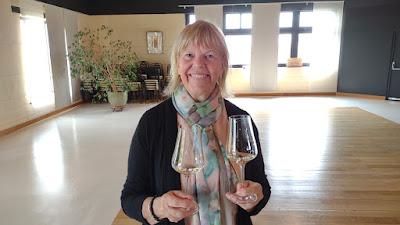




























































































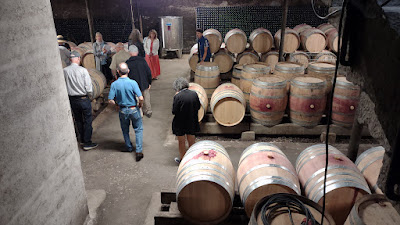















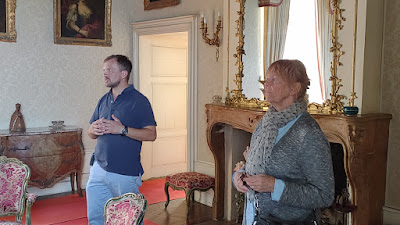

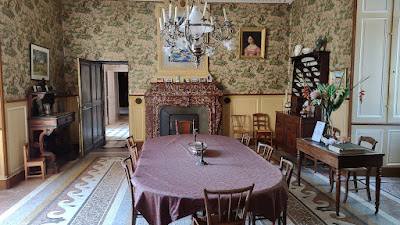
























































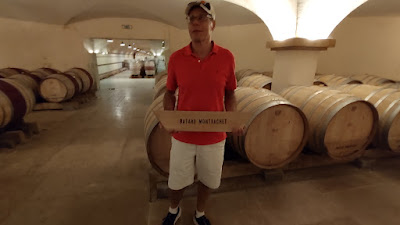




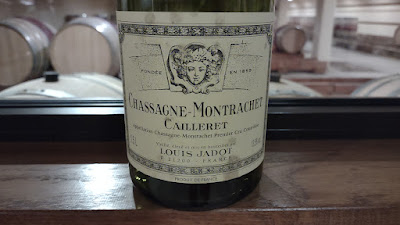
































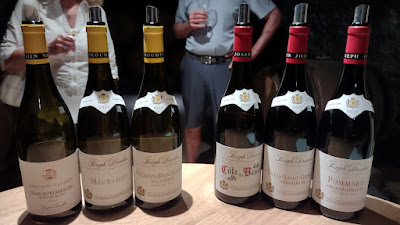












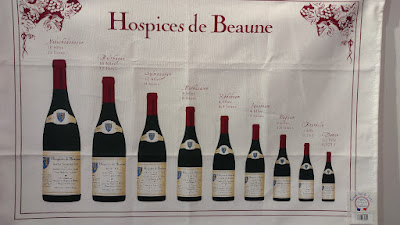





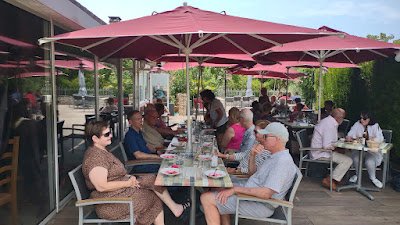







































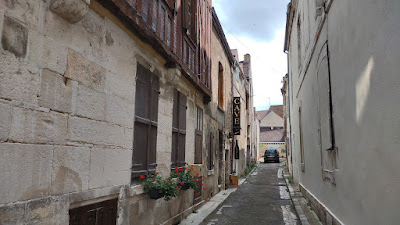


















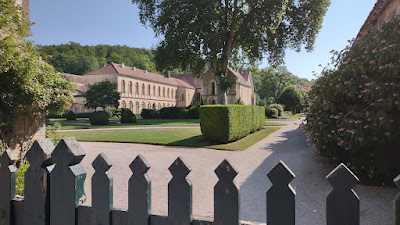




















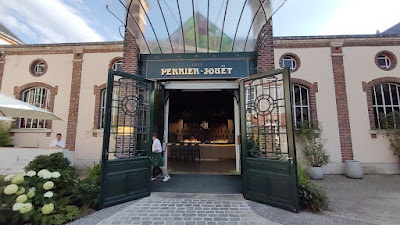








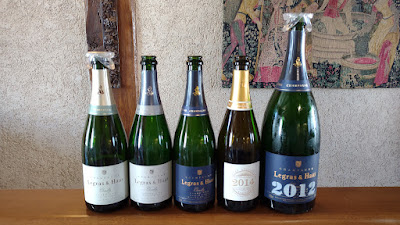










































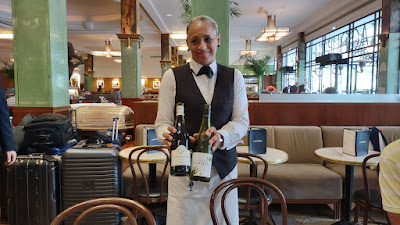













No comments:
Post a Comment